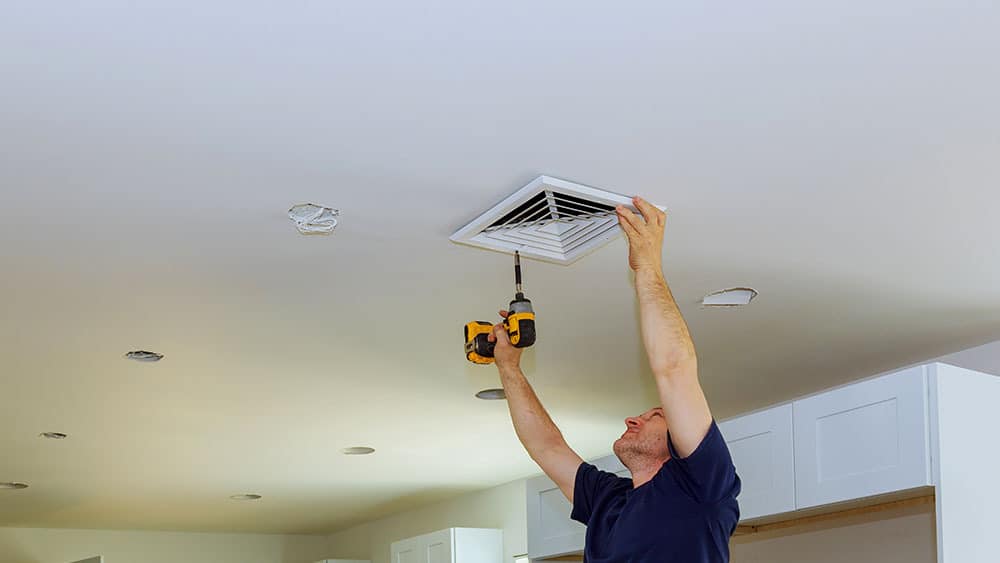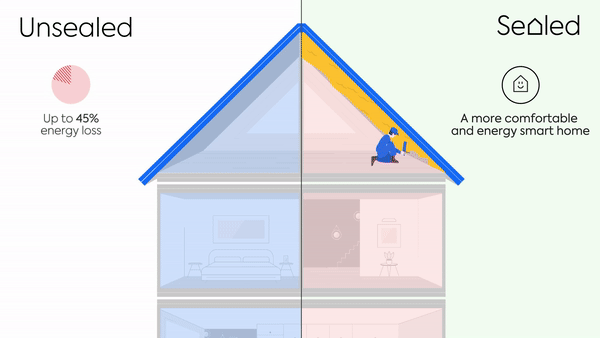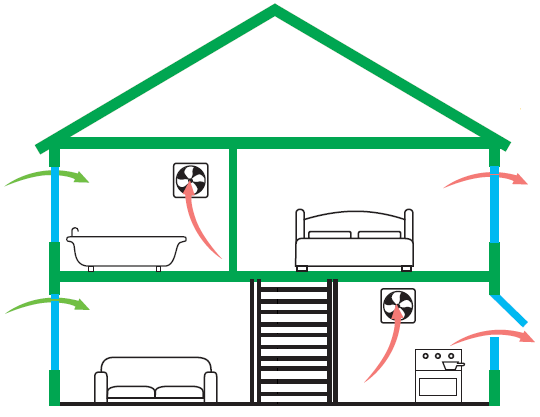Why Home Ventilation Melbourne Matters for a Healthier Living Environment
Wiki Article
Comprehending the Significance of Home Ventilation for a Healthier Living Atmosphere
Home ventilation plays a necessary function in preserving a healthy living environment. It helps with the exchange of outdoor and interior air, which is vital for boosting air quality. Without proper ventilation, homes can become reproducing grounds for toxins and irritants. The repercussions of inadequate air flow can be considerable. This raises the query of just how property owners can successfully implement ventilation approaches to guard their wellness and health. Comprehending these methods is crucial.
The Basics of Home Ventilation
Home ventilation functions as a necessary element of indoor air high quality and comfort. It involves the process of trading stagnant indoor air with fresh outside air, thereby reducing moisture and controlling temperature. Correct air flow systems can consist of all-natural approaches, such as open home windows and vents, as well as mechanical systems, such as exhaust fans and air exchangers. Reliable home air flow assists avoid problems like interior mold and mildew growth and the accumulation of damaging particles. It additionally improves total power effectiveness, as well-ventilated rooms can keep comfy temperature levels with less dependence on home heating and cooling down systems. Comprehending the fundamentals of home air flow is crucial for house owners seeking to create a healthier living environment for themselves and their family members.
Usual Resources of Indoor Air Air Pollution

Although lots of might not recognize it, interior air pollution can stem from numerous resources within a house. Typical contributors include volatile natural substances (VOCs) emitted from paints, solvents, and cleansing products. House devices, such as gas ovens and fire places, can launch unsafe gases like carbon monoxide gas and nitrogen dioxide. Additionally, mold and mildew and mold prosper in moist locations, releasing spores that affect air top quality. Family pet dander, allergen, and pollen can accumulate indoors, further aggravating contamination levels. Smoking cigarettes inside produces toxic chemicals that remain airborne. Building products, including asbestos and formaldehyde, can off-gas unsafe substances. Identifying these sources is crucial for maintaining a much healthier indoor setting and promoting efficient air flow approaches.
Health And Wellness Consequences of Poor Ventilation
Indoor air pollution can have significant health implications, especially when air flow is inadequate. Poor air flow can result in the buildup of hazardous contaminants, such as volatile natural compounds, mold and mildew, and particle matter. This build-up might cause respiratory problems, consisting of asthma, allergic reactions, and chronic obstructive pulmonary illness. People might experience signs and symptoms like migraines, tiredness, and inflammation of the eyes, nose, and throat. At risk populaces, such as kids and the elderly, are at higher danger for serious wellness results. Long-term exposure to improperly aerated environments can also add to much more major problems, consisting of heart diseases. Making sure appropriate air flow is vital for preserving a healthy and balanced living setting and minimizing the risk of wellness issues associated with interior air contamination.Effective Air Flow Approaches for Your Home
Correct ventilation is important for keeping a healthy interior setting, and applying reliable techniques can greatly enhance air top quality. Homeowners can begin by making sure that exhaust fans are installed in cooking areas and restrooms to remove excess wetness and smells. Opening windows regularly permits fresh air to distribute, especially during mild climate. In addition, using air cleansers with HEPA filters can assist catch air-borne pollutants. For homes with home heating and cooling down systems, maintaining cooling and heating systems and altering filters routinely is essential for peak performance. Including all-natural air flow methods, such as cross-ventilation, can likewise boost airflow. Ultimately, securing any type of leaks in home windows and doors protects against unwanted drafts, which can interrupt controlled air movement, eventually leading to improved indoor air quality and comfort.Maintaining Optimum Air Quality Year-Round
To keep suitable air quality year-round, homeowners need to take on a proactive technique to managing their indoor atmosphere. you could check here On a regular basis keeping an eye on indoor air high quality is crucial; this check it out consists of checking for toxins such as dust, mold and mildew, and volatile natural compounds (VOCs) Carrying out efficient ventilation systems, such as exhaust followers and air purifiers, can substantially minimize airborne contaminants. Furthermore, regular upkeep of heating and cooling systems assurances peak performance and air flow. House owners need to additionally think about humidity degrees, as too much moisture can cause mold and mildew development. Seasonal changes may demand modifications in air flow techniques to fit differing exterior air top quality. By focusing on these methods, home owners can produce a healthier space, advertising total health for all occupants throughout the year.Regularly Asked Inquiries
Exactly How Can I Inform if My Home Demands Much Better Air Flow?
To establish if a home needs much better air flow, one need to observe signs such as relentless moisture, mold and mildew development, mildewy odors, condensation on windows, or boosted allergy signs and symptoms, showing poor airflow and possibly poor indoor air quality.What Are the Indications of Poor Indoor Air High Quality?

Can Houseplants Improve Indoor Air High Quality Properly?
The effectiveness of houseplants in enhancing interior air top quality is questioned. While some studies suggest they can absorb contaminants and produce oxygen, their total influence may be marginal compared to correct air flow and air filtration systems.Exactly how Commonly Should I Change My Air Filters?
The regularity of air filter modifications typically depends upon use and filter kind. Generally, it is advised to replace filters every three months, though homes with allergies or pets may need even more frequent changes for suitable performance.Exist Any Particular Air Flow Solutions for Allergy Sufferers?
Several ventilation systems, such as HEPA-filtered units, successfully reduce irritants airborne. Home Ventilation Melbourne. These systems trap dust, plant pollen, and pet dog dander, giving allergic reaction victims with a cleaner, much healthier interior atmosphere while taking care of air quality effectively
It facilitates the exchange of exterior and interior air, which is crucial for improving air top quality. Home ventilation serves as a crucial part of indoor air quality and convenience. It entails the process of trading stagnant interior air with fresh outdoor air, thus lowering humidity and managing temperature. Interior air pollution can have significant wellness ramifications, particularly when air flow is poor. Proper air flow is necessary for keeping a healthy indoor setting, and applying reliable strategies can greatly enhance air top quality.
Report this wiki page